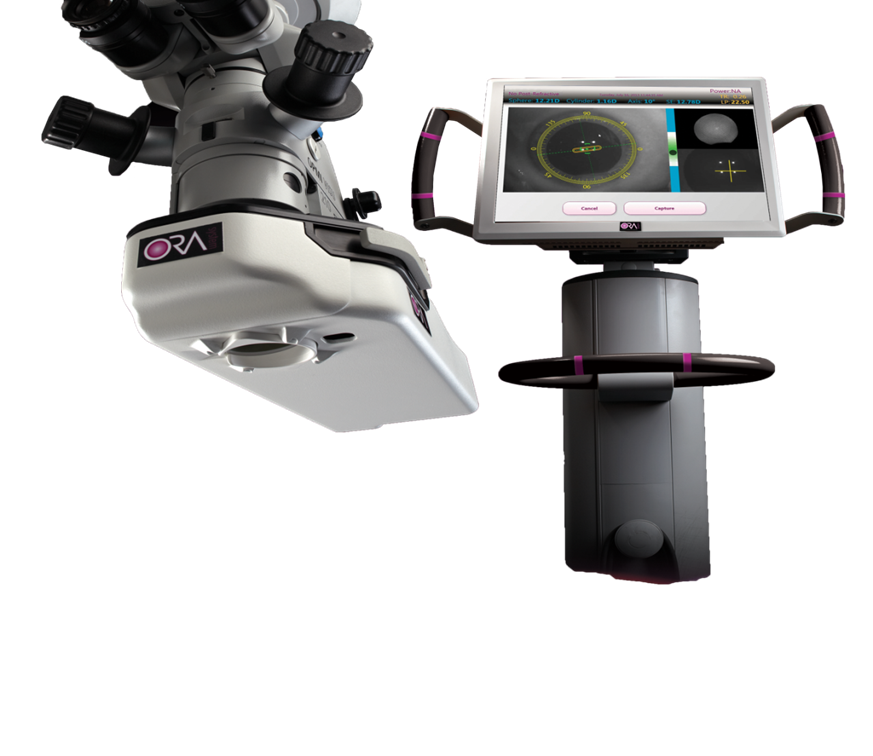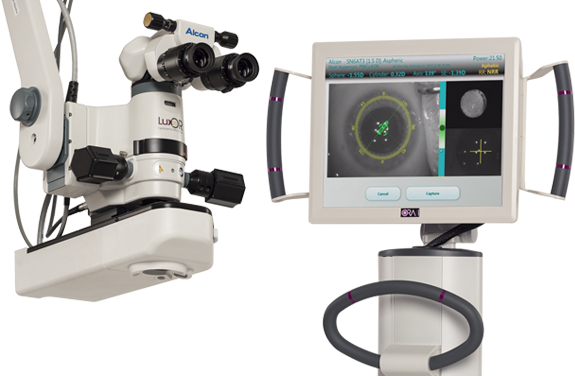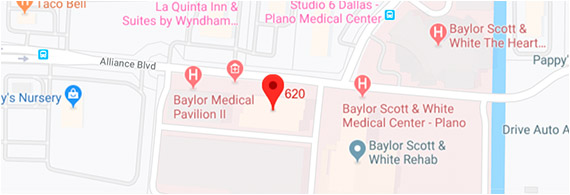ORA SmartVision Dallas
 A New Way to Measure Lens Implant Power
A New Way to Measure Lens Implant Power
How is the lens power for Cataract surgery measured?
When Cataract surgery is performed, a lens implant is placed in the eye. The lens power has a prescription and the prescription should match the prescription of your eye or glasses will be required. There are several ways to measure Lens power. None of the techniques is 100% accurate, but the ORA SmartVision system with VerifEye+ allows your surgeon to approximate LASIK like results after Cataract surgery.
- The old fashioned way: A few days before Cataract surgery, an ultrasound device is used to measure the length of the eye to estimate the lens power required for cataract surgery.
- The current way: A few days before Cataract surgery, an Optical biometer is used to measure the length of the eye and shape of the cornea to estimate lens power required for Cataract surgery. This technique uses laser technology and is more accurate than Ultrasound (old way). We employee the following technologies: Haag Streit Lenstar and IOL Master biometers.
- The New ORA SmartVision way: In the operating room, after the cataract is removed, the ORA laser is placed over the eye and used to scan the eye from front to back. This scan is used to compare your eye with millions of other cataract surgery patients and help select your lens power.
What patients benefit from ORA SmartVision?
 The older techniques used to measure lens power do so with the cataract still in place. ORA SmartVision is different because it is done in the operating room with the cataract out resulting in better accuracy.
The older techniques used to measure lens power do so with the cataract still in place. ORA SmartVision is different because it is done in the operating room with the cataract out resulting in better accuracy.
The ORA SmartVision will benefit almost every patient. But, the information it provides is most important in the following patients who have a high risk of needing glasses after cataract surgery:
- Former LASIK or PRK patients: LASIK and PRK changes the shape of the cornea, which creates errors when measuring lens power. If the Ultrasound (old) or Optical biometry(current way) is solely used, the patient will almost certainly be left with residual prescription, which will require glasses. With ORA Smart vision and Advanced lens power calculations, accuracy is much improved.
- High Nearsighted (long) and Farsightedness(short) prescription: The eye is made of 2 chambers: the anterior(front) chamber and the posterior(back) chamber. In a normal eye with mild to no prescription, the proportions of the chambers are normal. In a long or short eye, the proportion of chambers are abnormal and this can cause errors in measuring lens power.
- Astigmatism patients: In about 40% of the population, the cornea has an oval shape called astigmatism as opposed to the more round shape seen in an eye without astigmatism. Astigmatism can be a major cause of requiring glasses after Cataract surgery. ORA Smartvision helps with accuracy by measuring the lens power required to correct astigmatism and the axis of astigmatism. To correct astigmatism with ORA SmartVision, astigmatism management technology such as TORIC lens implant or Laser Astigmatic keratotomy is required.
- Dense Cataracts:
The New Refractive Cataract surgery
 Most patients who had Cataract surgery prior to the 1970s did not have a lens implant placed in their eyes and were guaranteed extremely thick “coke bottle” glasses after surgery. In 1980, lens implants started to get popular, but the technology for measuring lens power was not ideal and thus most patients still required glasses.
Most patients who had Cataract surgery prior to the 1970s did not have a lens implant placed in their eyes and were guaranteed extremely thick “coke bottle” glasses after surgery. In 1980, lens implants started to get popular, but the technology for measuring lens power was not ideal and thus most patients still required glasses.
In the early 2000s, as LASIK became more common, Cataract surgeons started wanting to provide Cataract surgery patients visual results similar to LASIK. Thus, a new field of Refractive Cataract surgery was born. The doctors at LaserCare Eye Center are refractive cataract surgeons. Early attempts were placed first at improving lens implant technology. This brought us astigmatism correcting lens implants and multifocal lens implants that allow vision far and near.
More recently, the technology has improved. The biggest recent advance has been ORA Intraoperative aberrometry or as we like to call it “ORA SmartVision”.




